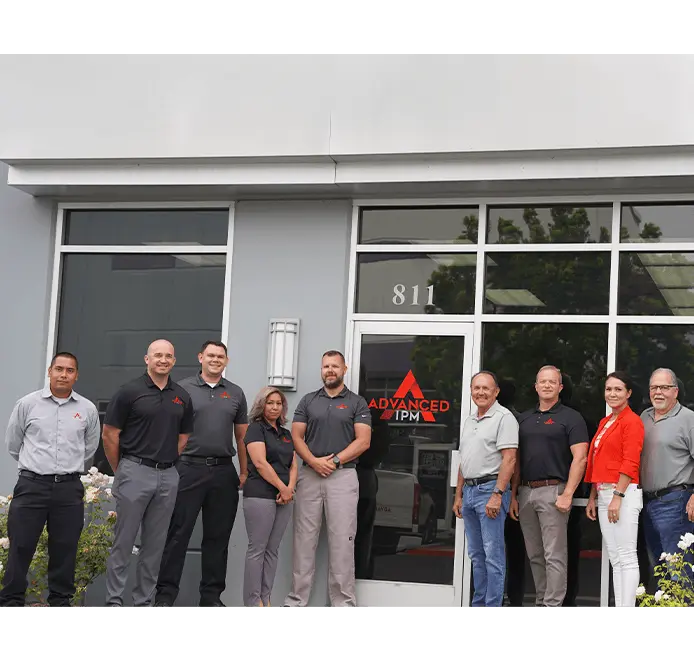Termites
"Service Before Self" Is Our Mentality
Pest Library
Pest Identification: Termites
Advanced Integrated Pest Management’s Top-Notch Termite Control
Termites consume large amounts of wood, which can become a major structural hazard over time. But their harmful habits go further than we might think. Termites invade buildings in large numbers – often without detection. If your home or business in California and Nevada is infested with termites, expect repair costs to soar the longer they’re able to stick around.
Termites Are a Structural Threat
Termites are known for their cellulose-based diet, which specifically includes wooden structures. Colonies can eat up to a pound of wood per day. Most termites are pale-colored and less than a half-inch in length, and they swarm at different times throughout the warm months (during which they mate, shed their wings, and set up new colonies). Once inside, they’re a year-round threat that’s difficult to detect, not to mention eradicate.
Because they often infest buildings without our knowledge, termites are called “silent destroyers.” Despite the name, they emit a soft rattling or rustling sound, similar to scratching paper, as they work. While not always easy to spot, there are a few visible indicators of their presence, including hollowed-out wood and discarded wings.
Three termite species are common in California and Nevada:
- Subterranean Termites: Subterranean termites are aptly named for their tendency to colonize underground. Known to gather up to 20 feet deep in the soil, they reach buildings through distinct mud tubes. They’re the most destructive termites because of their massive groups and propensity for quick reproduction. This species typically swarms in the spring, starting new colonies that inhabit secluded locations like patches of soil and building foundations.
- Drywood Termites: Although found above the ground, drywood termites are extremely hard to detect because they nest deep inside of wood. They infest all types of wood – specifically, wood that’s low in moisture content (hence their name). Items like furniture, as well as walls, ceilings, and floors, are at high risk. Their droppings, called frass, include remnants of the wood they eat. Frass is a common sign that drywood termites are present.
- Dampwood Termites: This species isn’t as much of a problem as the other two – and for good reason. The largest of the three, dampwood termites prefer wood that’s damp or rotten, and they require consistently high moisture levels. But because of our humid climate, they’re always a concern. Pay close attention to areas with condensation, leaky pipes, and fallen trees.
Get Your Free Termite Control Quote Today
The first step to getting rid of termites in your home or business is becoming aware of their presence. This may seem obvious, but because termites are good at working undetected, it’s not always easy. Watch out for warning signs and eliminate moist conditions. Beyond that, professional pest control is your best bet to deal with termites. Our technicians are trained to determine the extent of potential termite damage and the most effective way to stop them.
At Advanced Integrated Pest Management, we tackle pests of all kinds, including wood-loving termites. With a focus on both eradication and prevention, we combat subterranean, drywood, and dampwood termites in California and Nevada.
Avoid costly structural damage to your home or business – contact us today at 800-655-3993 to get help stopping your termite problem.
Why Work With Us?
- "Service Before Self" Mentality
- Quality Assurance Inspectors
- Client Portal for Transparent Service
- Custom Pest Control Solutions
- Family Owned and Operated Since 1981

Hear from Happy Customers

Reliable, Professional and Honest. I have been using Roseville Termite and Pest Control (Advanced Integrated Pest Management) for over 20 years.”

Discover the Difference
Contact Advanced Integrated Pest Management Today




